Firelei Báez
Firelei Báez
Workspace Program Resident 2013
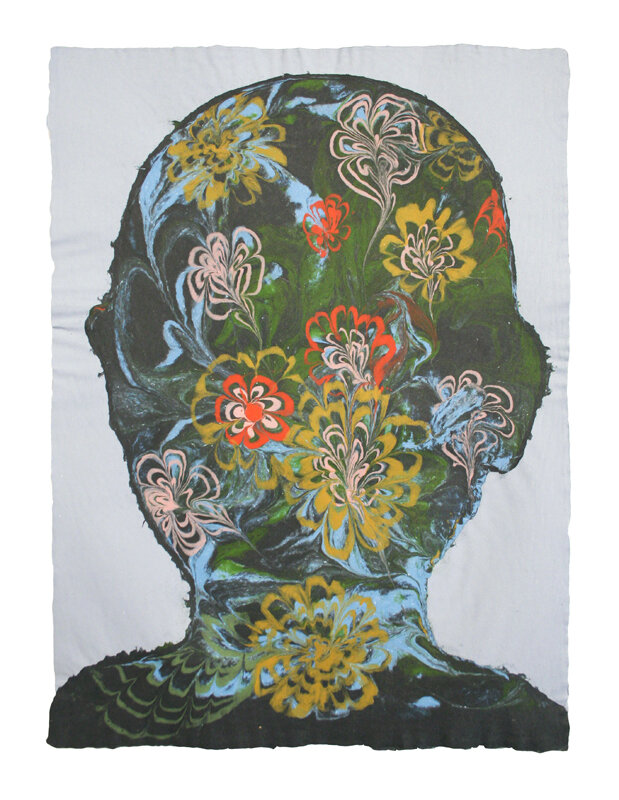
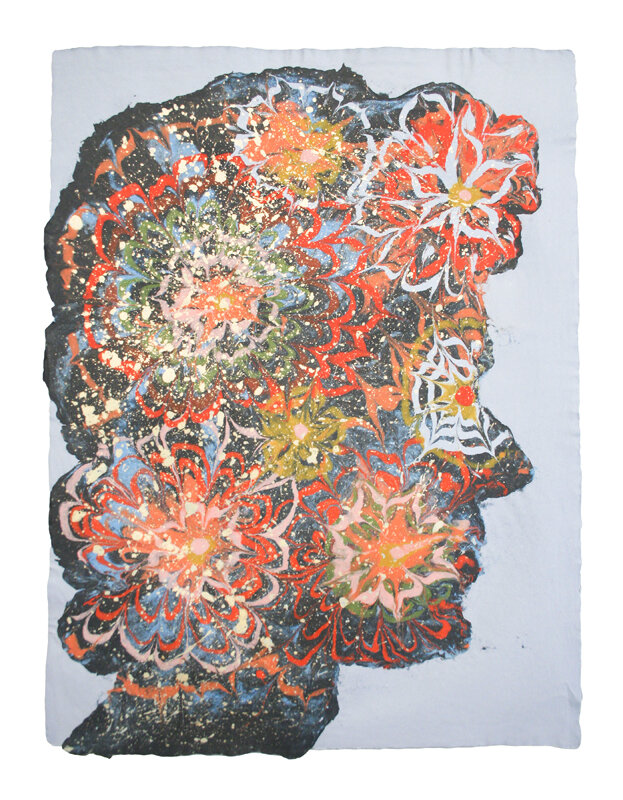



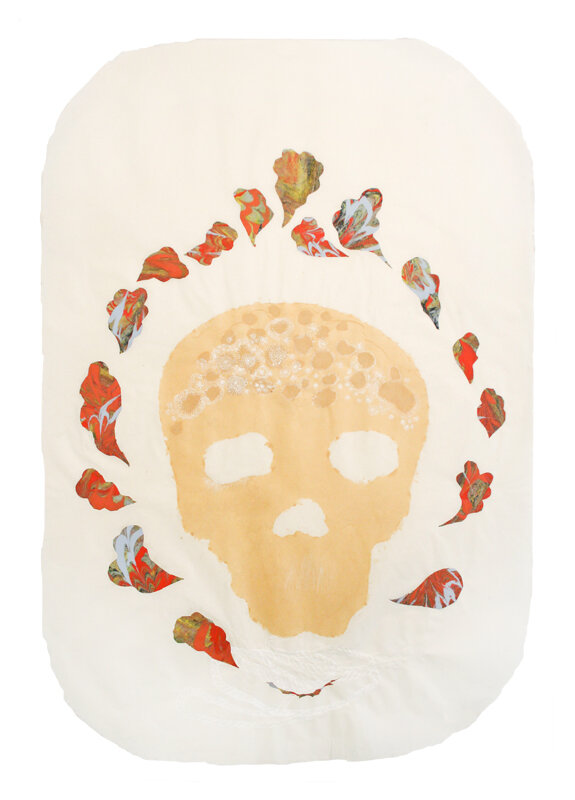

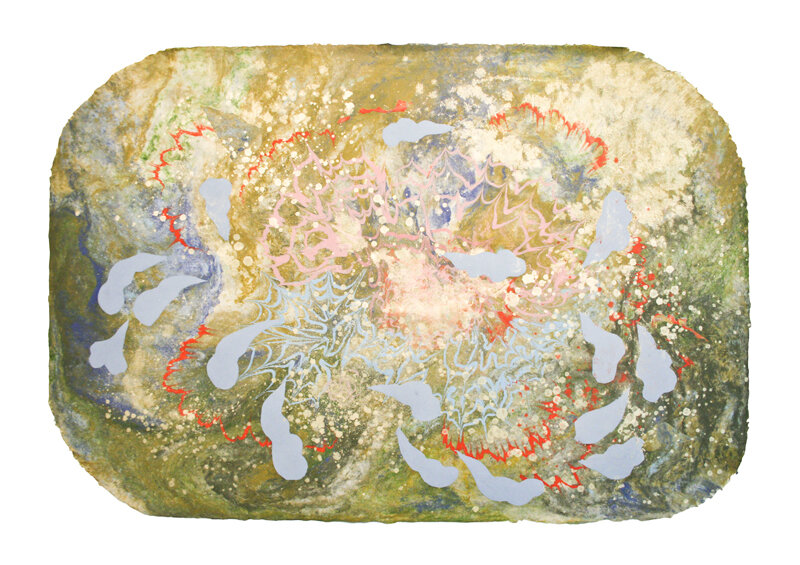
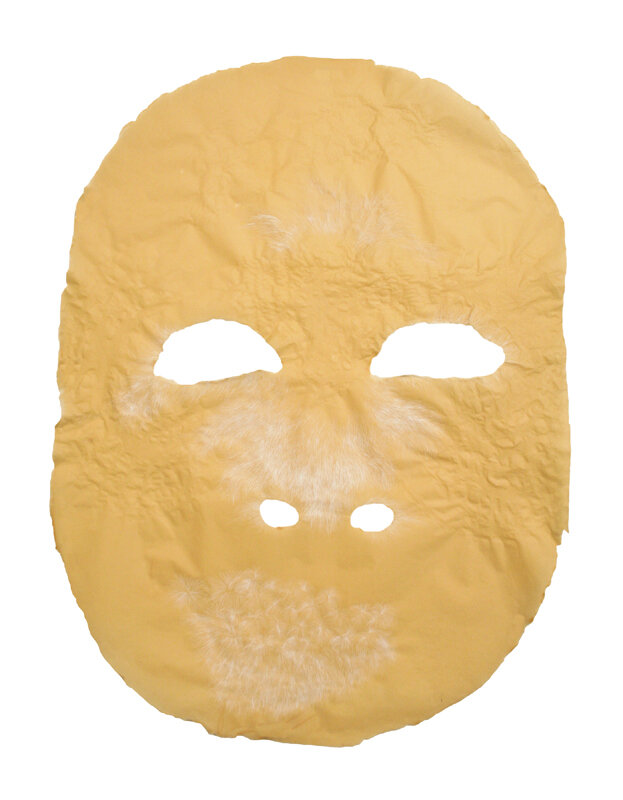
“For the pieces in the exhibition I followed an intuitive process, allowing the materials to inform the work made. I enjoy exploring new, unexpected ways of using materials, which is why I was drawn to pulp painting, marbling and collaging freshly pulled sheets. All of these techniques are usually associated with surface, but in this body of work each gesture is structurally embedded in the form. The warp and pull of different kinds of paper was also a point of interest, since they allow for a more object like, corporeal experience of paper.”
– Firelei Báez, 2013
Approaching paper as a ‘surrogate self’ for its corporeal qualities and similarity to skin (reacting to its environment and aging in unexpected ways) Báez created a series of large-scale works that refer to landscape, the body, and charged notions of female beauty. Interested in the histories of paper throughout different cultures, the artist began with the reference point of the figures in Persian miniatures and scrollery. She created her own figures based on women in YouTube videos of ‘twerking’ or ‘wilding’ fights, behavior that falls outside normal feminine ideals. These figures appear in her studio practice as well as the Dieu Donné work.
Báez created the figures through a subtractive process, drawing form by removing excess pulp on the screen, which was then couched, pressed, and collaged to the base sheet while still wet. Another innovative twist is Báez’s process of marbling pigmented pulp to create a sheet of marbled paper, where paper marbling is typically applied to the surface of the paper. Formation aid was used in a non-traditional way to slow the draining process and allow the arist to apply additional marbling and pulp painting to the top of the sheet in the deckle box while it continued to drain.
Working on several pieces simultaneously and intuitively by combining various papermaking processes and techniques, such as marbling, collaging, and pulp painting, the artist’s work evolved over the course of the residency, moving from using stencils to painting and shaping the pulp freehand, and from small to large scale. The artist said of Amy Jacobs, her studio collaborator, “Amy was an amazing collaborator-slash-magician. She made the transition from working in my studio to Dieu Donné seamless. She knows the process so well and is open to play, which allowed me to invent as I went along and just trust the materials, rather than try to impose something else on them.”
In the Studio
About the Artist
Firelei Báez (b. 1980, Santiago de los Caballeros, Dominican Republic) received an M.F.A. from Hunter College, a B.F.A. from the Cooper Union’s School of Art, and studied at the Skowhegan School of Painting and Sculpture. The artist currently lives and works in New York and is currently represented by James Cohan Gallery.
Born to a Dominican mother and a father of Haitian descent, Firelei Báez’s concerns with the politics of place and heritage can be traced back to her own upbringing on the border between Hispaniola’s two neighboring countries, whose longstanding history of tension is predicated in large part by ethnic difference. Báez’s work ties together subject matter mined from a wide breadth of diasporic narratives. In addition to self-portraiture, past series have examined ciguapas, elusive and cunning female creatures from Dominican folklore; tignons, head-coverings women of color were legally required to wear in 18th century New Orleans; and the iconography of the Black Panther Movement. Báez often paints directly onto historical material, such as found maps, manuals, and travelogues, layering figures over them. By rendering spectacular bodies that exist on opposite sides of intersecting boundaries—between human and landscape, for example, or those reinforcing racial and class stratification—Báez carries portraiture into a liminal space, where subjectivity is rooted in cultural and colonial narratives as much as it can likewise become untethered by them.
Báez is shortlisted for Artes Mundi 9 in 2020, and will be the subject of a solo presentation at the ICA Watershed, Boston, MA. In 2019, the artist's work was the subject of solo exhibitions at the Mennello Museum of Art, Orlando, FL, the Witte de With Center for Contemporary Art, Rotterdam, the Netherlands, and the Modern Window at the Museum of Modern Art, New York. Her major 2015 solo exhibition Bloodlines was organized by the Pérez Art Museum Miami and travelled to the Andy Warhol Museum in Pittsburgh. Other recent solo exhibitions of Báez’s work have been presented by The Studio Museum, Harlem, NY; Contemporary Arts Center Cincinnati, OH; Kemper Museum of Contemporary Art, Kansas City, MO; DePaul Art Museum, Chicago, IL; Taller Puertorriqueno, Philadelphia, PA; and Utah Museum of Contemporary Art, Salt Lake City, UT.
Báez is the recipient of many awards: most recently, the Herb Alpert Award in the Arts (2020), the Soros Arts Fellowship (2019), the United States Artists Fellowship (2019), the College Art Association Artist Award for Distinguished Body of Work (2018), the Future Generation Art Prize (2017), the Chiaro Award (2016), and Joan Mitchell Painters and Sculptors (2011). (Source: James Cohan)









